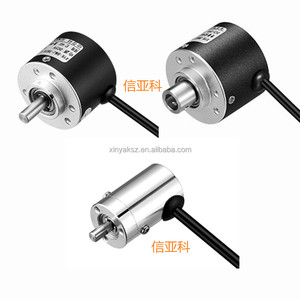Introduction to Analog Incremental Encoders
Analog incremental encoders are pivotal in the realm of automation and control, widely used to convert the rotational or linear position of a shaft into a corresponding electrical signal. These devices offer precise position feedback in applications requiring accurate monitoring and control systems. With advancements in sensor technology, analog incremental encoders have become indispensable in industries such as manufacturing, robotics, and aerospace.
Types of Analog Incremental Encoders
Analog incremental encoders come in several types, each designed to cater to specific application needs. Understanding these variations can help in selecting the right encoder for your project.
- Rotary Encoders: These are designed to measure the rotational position of a shaft, providing continuous feedback for motor control and positioning systems.
- Linear Encoders: Ideal for applications that require linear motion measurements, these encoders convert the movement along a straight path into an electronic signal.
- Optical Encoders: Utilizing light and optical sensors, these encoders offer high-resolution output for precise motion control, making them suitable for high-performance machinery.
- Magnetic Encoders: With robust and durable constructions, magnetic encoders are less sensitive to dust and dirt, making them ideal for harsh environments.
Function, Feature, and Design of Analog Incremental Encoders
The design and functionality of analog incremental encoders are central to their effectiveness in various applications. These devices boast several distinctive features that enhance their performance:
- Signal Output: Analog incremental encoders typically provide a sinusoidal output, allowing for smooth and continuous position tracking.
- Resolution: They come in different resolutions, enabling users to choose the level of precision based on their specific operational requirements.
- Compact Design: Most analog encoders are designed to occupy minimal space, making them suitable for tight installations in mechanical systems.
- Diverse Mounting Options: These encoders can be mounted in various configurations, accommodating a wide range of motor and drive setups.
Applications of Analog Incremental Encoders
Analog incremental encoders are employed across numerous industries due to their versatility and reliability. Here's a closer look at their practical applications:
- Automated Manufacturing: They are integral to CNC machines, providing real-time feedback for cutting and shaping operations.
- Robotics: In robotic joints, these encoders ensure precise movement and positioning, contributing to the accuracy and efficiency of robotic actions.
- Elevators and Lifts: Controlling the position and movement speed in elevators requires reliable feedback that analog incremental encoders provide.
- Textile Machinery: Ensuring that fabric tension and speed are accurately managed during production, these encoders optimize the workflow.
Conclusion
Utilizing analog incremental encoders not only enhances operational precision but also contributes to improved system reliability and performance. As modern industries continue to evolve, the demand for high-quality, accurate measurement devices like analog incremental encoders will remain a cornerstone in ensuring the seamless function of automated systems.



































